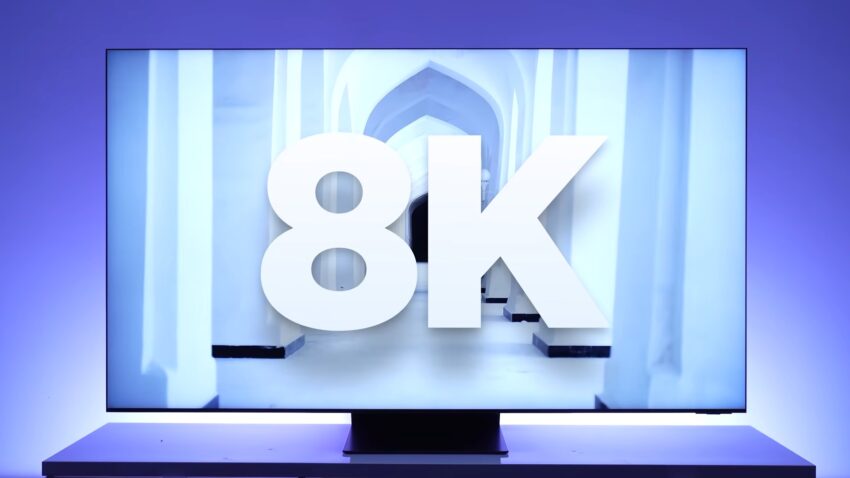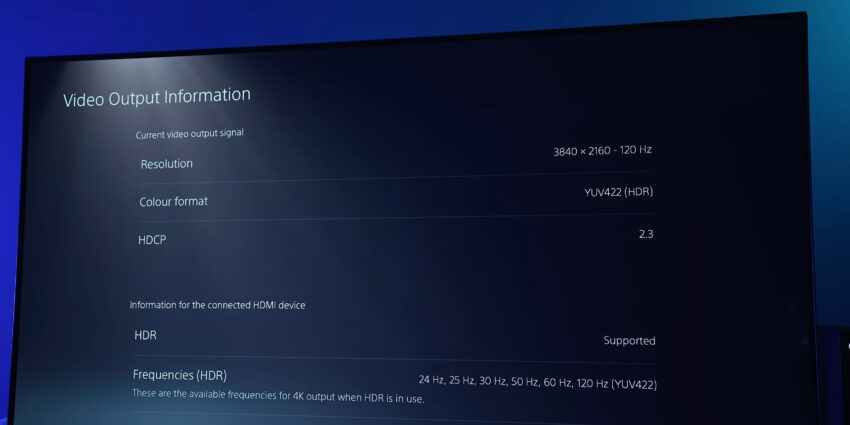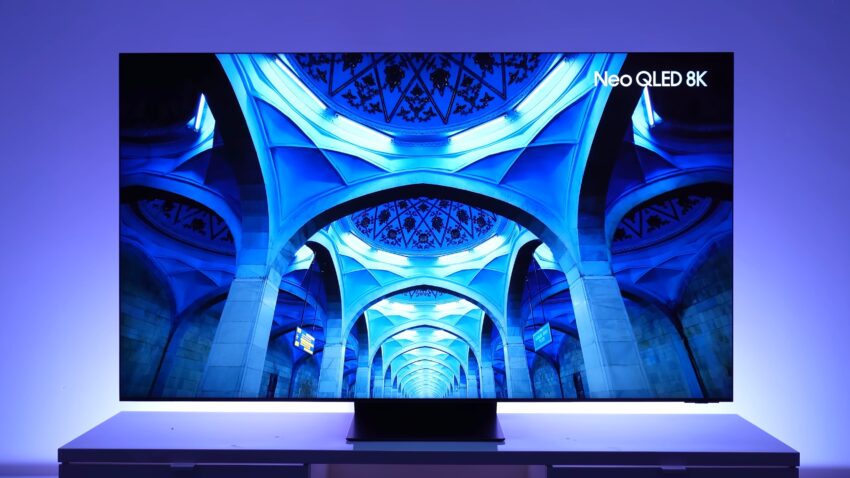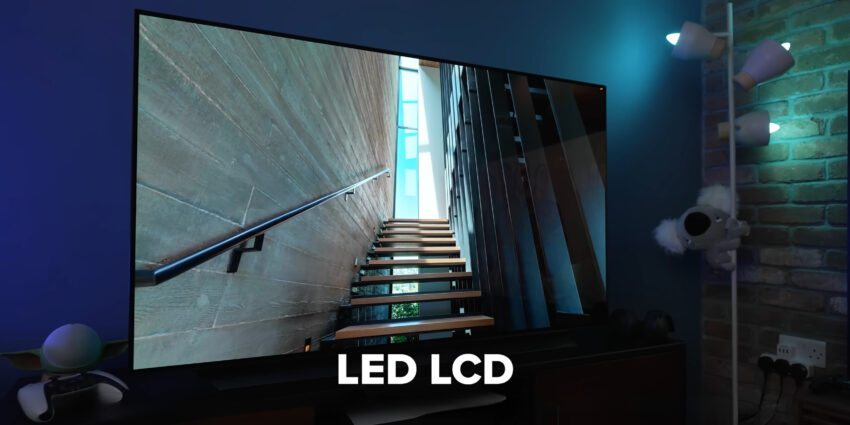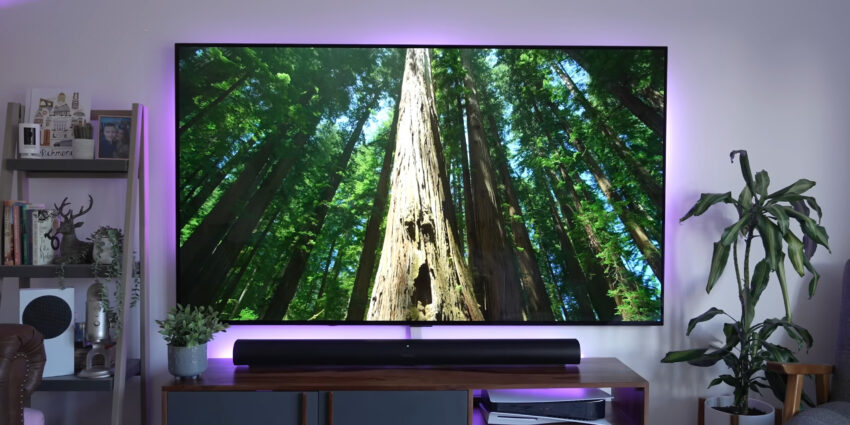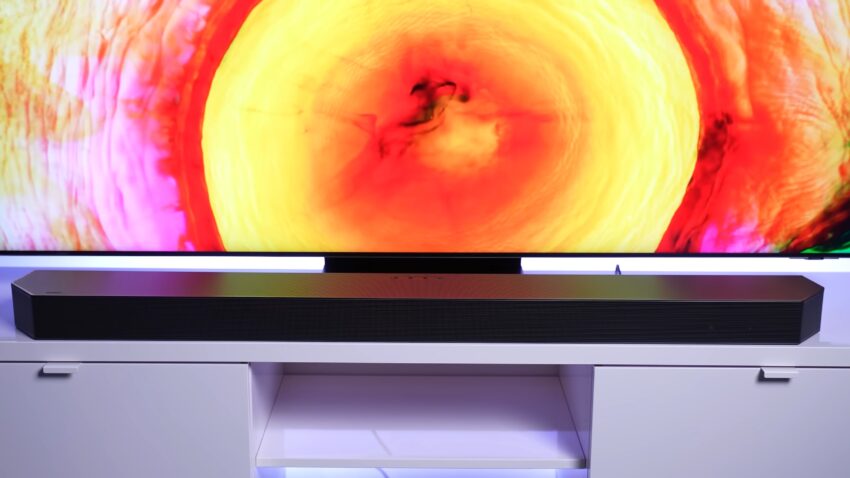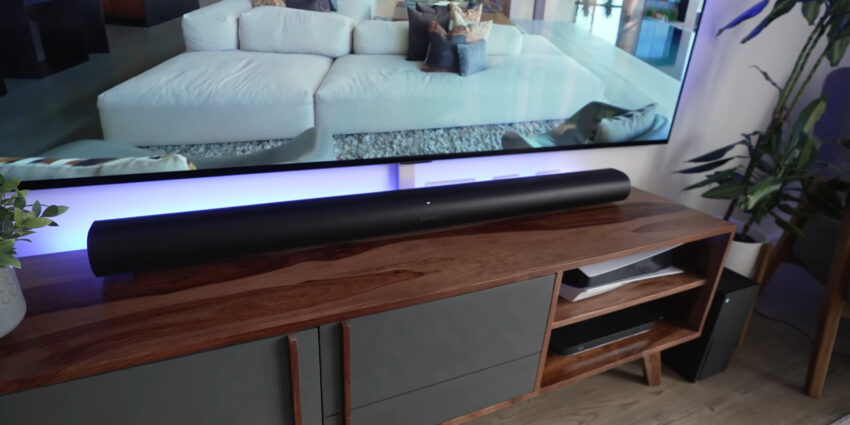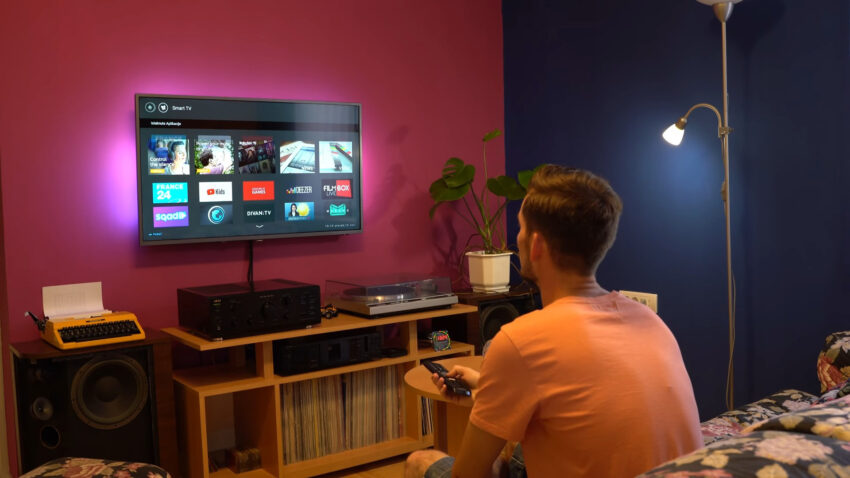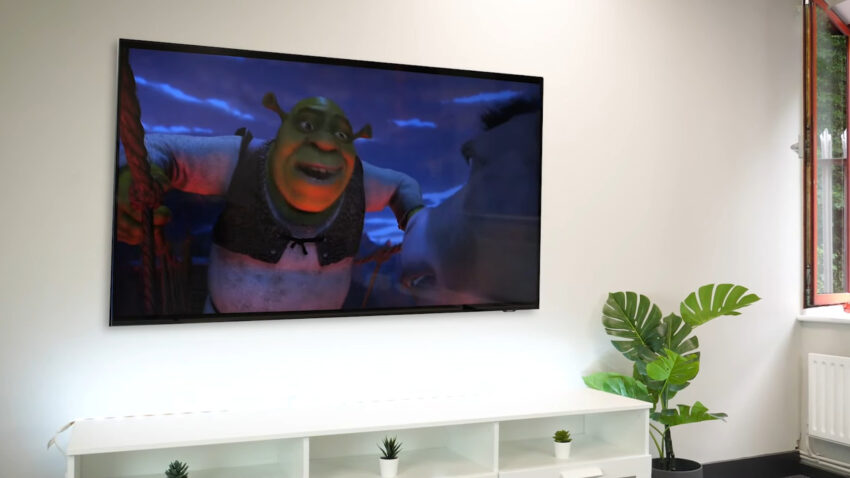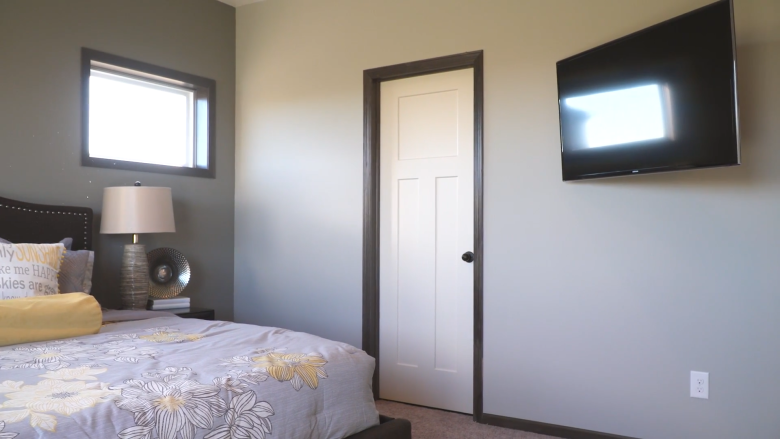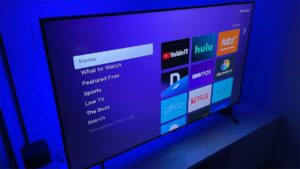In the realm of home entertainment, the size of your television can significantly influence your viewing experience. As we venture into 2024, the comparison between 65″ and 60″ TVs remains a hot topic among consumers. Each size comes with its unique set of features and advantages, making the choice often a matter of personal preference, room dimensions, and viewing distance.
This article will dissect the distinct features of 65″ and 60″ TVs, offering a comparison to aid you in making an informed decision. The nuances between these two popular TV sizes can be subtle yet impactful, and understanding them can be the key to enhancing your home viewing experience.
So, whether you’re a movie enthusiast seeking a cinematic experience within the comfort of your home, a gamer aiming for an immersive gameplay experience, or simply someone who enjoys a good Netflix binge, this guide is designed to help you find your perfect match. Let’s explore the world of 65″ and 60″ TVs and discover what each has to offer.
Size Difference
Dimensions
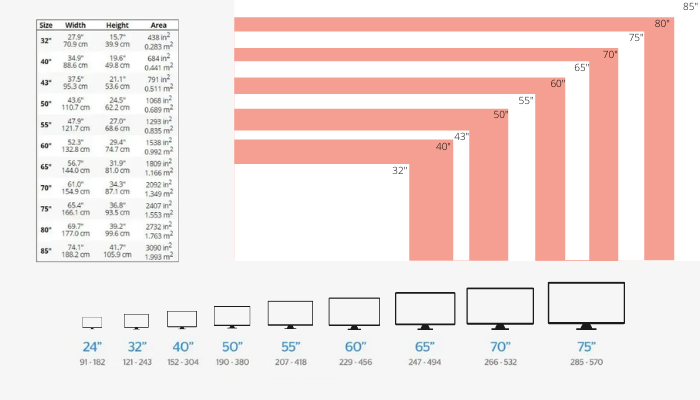
The main difference that lies between these two televisions is the dimensions. While buying a TV, keep in mind that the price of the TV is directly proportional to its dimensions. The larger the dimension, the higher the price will be. The 3 types of dimensions are depth, height, and width.
a 65-inch TV is 32 inches tall without a stand and with a stand, its height is 36 inches. The width is 58 inches and the depth is 1.7 inches or 2 inches. On the other hand, the height of a 60-inch TV is 29.4 inches tall and is 32 inches wide.
Room Space
Large dimensions of TVs are suitable for large living rooms whereas small dimensions of TVs are suitable for crowded rooms. A 65-inch TV has a larger dimension than a 60-inch TV and is suitable for large living rooms where your distance from TV is approximately 9 feet in order to perceive high picture quality. For medium-sized rooms, a 60-inch TV is suitable.
Viewing Distance
Viewing distance is one of the most considered factors while buying larger-sized televisions. As both 65 and 60 inch TVs have larger dimensions, only a slight difference occurs in width, height, and depth.
Smart TV Features and Connectivity Options:
In addition to size and picture quality, smart TV features and connectivity options are important factors to consider when purchasing a new television.
Smart TVs offer a range of features such as built-in Wi-Fi, voice control, streaming apps, and internet browsing. With these features, you can access online content, stream movies and TV shows, and even control your smart home devices.
When choosing a smart TV, it’s important to consider the operating system it uses. Popular smart TV operating systems include Android TV, Roku TV, and webOS. Each operating system has its own unique features and interface, so it’s important to choose one that suits your needs.
In terms of connectivity options, most modern TVs come with multiple HDMI ports, which allow you to connect your cable box, gaming console, and other devices. Some TVs also have USB ports, Ethernet ports, and Bluetooth connectivity.
Another important connectivity option to consider is screen mirroring or casting, which allows you to mirror the screen of your smartphone or tablet onto your TV. This is a useful feature for streaming content from your mobile device or sharing photos and videos with family and friends.
Resolution: Clarity and Detail
The resolution of a TV is crucial as it determines the clarity and detail of the picture. Higher resolution means more pixels, leading to more detailed and clearer images.
65″ TVs: A Higher Standard
- Resolution Varieties: 65″ TVs often come with a variety of resolutions, ranging from Full HD to 8K. Typically, many 65″ models offer 4K resolution, ensuring optimal clarity and sharpness.
- Detail and Clarity: The larger screen size allows for better utilization of higher resolutions, making every detail stand out, creating a more lifelike and immersive viewing experience.
60″ TVs: Balancing Size and Clarity
- Popular Resolution: 60″ TVs predominantly feature 4K resolution, balancing size and clarity to offer detailed and sharp images.
- Efficiency: These TVs efficiently utilize their resolution, providing a clear and detailed picture, making them suitable for various viewing purposes, from movies to gaming.
Technology
Technology is the backbone of any TV, affecting everything from the display to the user interface. It is pivotal to consider the type and quality of technology embedded in the TV.
Advanced Technology in 65″ TVs
- Leading-Edge Display: 65″ TVs often feature advanced technologies like OLED and QLED, offering unparalleled color reproduction, contrast ratios, and black levels.
- Smart Features and Connectivity: Enhanced smart features, including voice recognition and a plethora of streaming services, coupled with multiple connectivity options, make 65″ TVs versatile entertainment hubs.
Robust Technology in 60″ TVs
- Variety in Display Technology: 60″ TVs provide a range of technology options, including LED and LCD, ensuring a balanced performance in color reproduction and brightness.
- Smart Functionality: Integrated smart features and extensive connectivity options in 60″ TVs facilitate seamless access to various entertainment and streaming services, catering to diverse user preferences.
Design: Aesthetics and Placement
The design of a TV is often a decisive factor for buyers, as it needs to blend with the room’s aesthetics and accommodate spatial constraints.
Sleekness and Style of 65″ TVs
- Slim Profiles and Minimal Bezels: 65″ TVs often boast sleek designs with slim profiles and minimal bezels, maximizing screen real estate and enhancing the aesthetic appeal.
- Mounting and Placement: Despite their size, innovative mounting solutions and stand designs allow for flexible placement of 65″ TVs in various living spaces, optimizing viewing angles and distances.
Compact Elegance of 60″ TVs
- Design Versatility: The design of 60″ TVs is versatile, offering both traditional and modern aesthetics, making them adaptable to different interior decors.
- Space Efficiency: Their comparatively compact dimensions make 60″ TVs suitable for rooms with limited space, without compromising on the style quotient.
Price: Investment and Value
While 65″ TVs are generally more expensive due to their size and features, 60″ TVs can offer substantial value, providing a balance between price and performance.
Value Proposition of 65″ TVs
- Higher Price Points: 65″ TVs, with their advanced features and technologies, tend to have higher price points, positioning them as premium options in the market.
- Long-Term Investment: Investing in a 65″ TV can be seen as future-proofing one’s entertainment setup, thanks to their superior performance, durability, and feature sets.
Affordability of 60″ TVs
- Budget-Friendly Options: 60″ TVs are generally more affordable, offering a balance between size, features, and price, making them a popular choice for budget-conscious consumers.
- Value for Money: The combination of reasonable pricing, reliable performance, and robust features make 60″ TVs a value-for-money proposition for a wide range of consumers.
Sound Quality
Sound quality is an integral component of the overall viewing experience, contributing to the immersion and enjoyment of the content. Both 65″ and 60″ TVs offer varying degrees of audio experiences, depending on their built-in technologies and compatibility with external audio systems.
Immersive Audio in 65″ TVs
- Advanced Audio Technologies: 65″ TVs often incorporate advanced audio technologies like Dolby Atmos, delivering immersive and dynamic sound experiences and enhancing the impact of visual content.
- Sound System Compatibility: The compatibility with high-end external sound systems and soundbars allows users to further enhance the audio quality, providing flexibility in creating their ideal home theater setups.
Balanced Audio in 60″ TVs
- Quality Built-in Sound: 60″ TVs typically feature quality built-in sound systems, offering clear and balanced audio suitable for everyday viewing needs.
- External Audio Options: These TVs also support connections to external sound systems and soundbars, allowing users to upgrade their audio experiences based on their preferences and requirements.
Pros and Cons of a 65-Inch TV:
A 65-inch TV is a popular choice for those who want a larger-than-life viewing experience. Here are some of the pros and cons of a 65-inch TV:
- Immersive viewing experience: A 65-inch TV offers a larger screen size, which can create a more immersive viewing experience, especially when watching movies or sports.
- Better picture quality: A larger screen size can also enhance the picture quality, especially when it comes to 4K content.
- Great for large rooms: A 65-inch TV is ideal for larger living rooms or media rooms, where the viewing distance is greater and a larger screen size can be appreciated.
- Higher price: A 65-inch TV is generally more expensive than a smaller TV size, which can make it less accessible for some buyers.
- Requires more space: A larger TV size can also take up more physical space in a room, which may not be ideal for smaller spaces.
- Can strain eyes: Watching a large TV from a close distance can cause eye strain and discomfort, which is something to consider before purchasing.
Pros and Cons of a 60-Inch TV:
A 60-inch TV is a slightly smaller option than a 65-inch TV but still offers a larger screen size than many other TVs on the market. Here are some of the pros and cons of a 60-inch TV:
- Great for larger rooms: A 60-inch TV is still a great option for larger rooms, providing an immersive viewing experience and enhanced picture quality.
- More affordable: A 60-inch TV is generally more affordable than a 65-inch TV, making it a more accessible option for buyers.
- Requires less space: While still a larger TV size, a 60-inch TV requires less physical space than a 65-inch TV, which may be ideal for some smaller rooms.
- May not be large enough for some viewers: Depending on the viewing distance, a 60-inch TV may not be large enough to provide the optimal viewing experience for some viewers.
- Picture quality may not be as good: While still offering good picture quality, a 60-inch TV may not have the same level of detail and clarity as a larger 65-inch TV.
- Limited availability: As manufacturers focus more on 55-inch and 65-inch TVs, finding a good quality 60-inch TV may become more difficult as they are phased out.
FAQ
Is a 65-inch TV too big?
A 65-inch TV is not too big in size. Its dimensions are 32 inches tall, 58 inches wide, and 2 inches deep. If you want to have a better experience of home theater then a 65-inch TV is best suitable.
How far should you sit from a 65-inch 4K TV?
The viewing distance of television depends upon its dimensions. In the case of a 65-inch TV, the range of viewing distance is from 5.4 feet to 8.1 feet which is suitable for perceiving high picture quality.
How do you pick the right TV for your room?
Before buying a television, the size that you are buying is very important to be considered. Usually, for small and crowded rooms, 32-inch or 55-inch TVs are suitable. But for large living rooms and media rooms, large TV dimensions like 60-inch or 65-inch TVs are best suited in order to perceive HD picture quality and videos.
What is a good size of TV for bedrooms?
As bedrooms are not large in space and are medium-sized, TVs that are suitable for bedrooms are 43-inch, 32-inch, and 55-inches.
Are 60-inch TVs phased out?
As manufacturers focus more on larger TV sizes like 55-inch and 65-inch TVs, it’s possible that 60-inch TVs may become less common in the market. However, this doesn’t necessarily mean that they are being phased out altogether.
Some manufacturers may still produce 60-inch TVs, and there are still many options available from various brands. It’s always a good idea to do your research and compare different TV sizes and models to find the one that best fits your needs and budget.
How long do TVs typically last?
The lifespan of a TV can vary depending on factors like usage, environment, and quality. Generally, modern TVs can last anywhere from 5 to 10 years or more with proper care and maintenance.
How do I troubleshoot common issues with my TV?
If you’re experiencing issues with your TV, start by checking the connections and settings to make sure everything is properly configured. You can also consult the user manual or online resources for troubleshooting tips. If the issue persists, contact the manufacturer or a professional repair service.
Should I buy an extended warranty for my TV?
Whether or not to buy an extended warranty for your TV will depend on your personal preferences and risk tolerance. Extended warranties can offer peace of mind and protection against unexpected repairs, but they can also be expensive and may not be necessary.
Final Words
The choice between a 65″ and a 60″ TV largely depends on your personal preferences, room size, and viewing distance. Both sizes offer unique features and advantages, with the 65″ TV providing a more immersive viewing experience, especially for larger rooms. On the other hand, the 60″ TV, while slightly smaller, is more affordable and requires less space, making it a suitable choice for medium-sized rooms.
Smart TV features and connectivity options also play a significant role in the decision-making process, with factors such as built-in Wi-Fi, voice control, streaming apps, and internet browsing capabilities to consider. The operating system used by the smart TV and the availability of connectivity options like HDMI and USB ports, Ethernet ports, and Bluetooth connectivity can greatly enhance your viewing experience.
Ultimately, the decision between a 65″ and a 60″ TV should be based on a combination of factors, including your budget, room size, viewing distance, and the specific features that are most important to you. By understanding the subtle yet impactful differences between these two popular TV sizes, you can make an informed decision that will enhance your home viewing experience.
Related Posts:
- What Size TV you Should Buy - Home Entertainment Setup
- Samsung TU8000 vs RU8000 - Ultimate Comparison 2024
- LG UK6300 4k Smart UHD TV 2024 - Full of Premium Features
- LG CX OLED TV 2024 Review - Unparalleled Picture…
- 7 Best 24-28 Inch 1080p Smart TV 2024 - Small…
- 42 Inch 16x9 Display vs 50 Inch 16x9 Display -…




